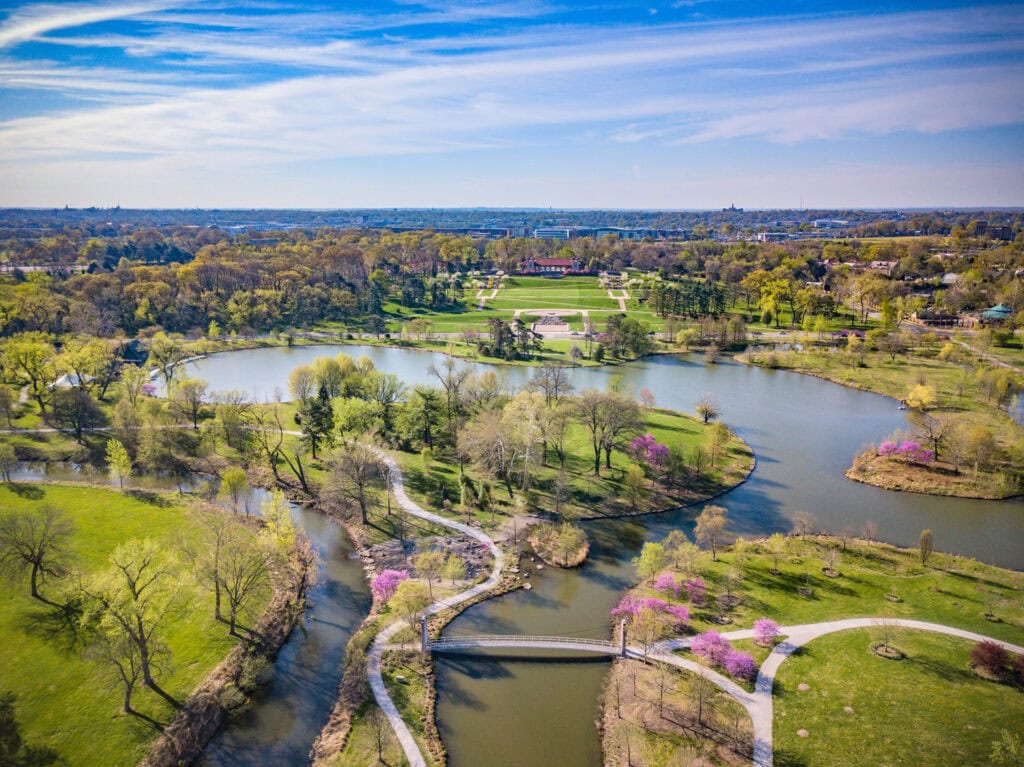WRITTEN BY Bek Mitchell-Kidd
Having one of the most beautiful urban parks in American is a claim St. Louis takes seriously. At approximately 1,300 acres, it is bigger than New York City’s Central Park and opened to the public in 1876.
You may be familiar with the park given some of the iconic destinations it encompasses including the World’s Fair Pavilion, the Emerson Grand Basin, and the Boathouse which offers year-round dining and boat rentals.
What you may not know is that in 1986 Forest Park Forever was founded in partnership with the City of St. Louis and the Department of Parks, Recreation and Forestry to restore, maintain, and sustain Forest Park.

“In the 1980s, it was becoming increasingly apparent to the St. Louis community that Forest Park did not have the funding it needed, and years of deferred maintenance were taking their toll, threatening this storied destination to slip into permanent neglect and disrepair,” says Katie Stuckenschneider, Forest Park Forever’s marketing and digital media manager. “Forest Park Forever began as a nonprofit with a few employees focused on raising funds for Park improvements. But over more than three decades, we’ve become one of the country’s leading conservancies, with a team of more than 50 working across horticulture, conservation, ecology, capital projects, maintenance, education, and more.”

Forest Park is a park for everyone, and I enjoy promoting a place that helps sustain our region as a whole. —Katie Stuckenschneider, Forest Park Forever
Guided by the Forest Park Master Plan, the initial $100 million restoration took place between 1996 and 2004, and the major Park icons were restored, including the beloved 7,500-squarefoot Jewel Box greenhouse.
A recent big win includes the creation of the Anne O’C. Albrecht Nature Playscape, which opens this summer. Playscape was built to enable visitors, especially children, to connect with nature and engage their senses as they explore, discover, and learn. The destination features nine distinct activity areas—including a sensory garden, spring, meadow, mounds, and wetland—and a series of accessible paths and boardwalks that connect them.
More than 13 million visitors annually explore the cultural institutions in Forest Park including the Saint Louis Zoo, The Muny, Saint Louis Science Center, Missouri History Museum, and Saint Louis Art Museum—which all operate independently in the shared space.
Forest Park Forever also helps fund experiential educational opportunities to teachers, students, and adults and provides information and guides throughout the park.

“A lot of people are surprised to hear that almost everything in Forest Park is free. Forest Park is a park for everyone, and I enjoy promoting a place that helps sustain our region as a whole. I am a huge advocate of the City of St. Louis; I believe Forest Park helps bring the region together,” says Katie.
Peachy readers can learn more about how to support Forest Park Forever here including helping with the next ambitious initiative to improve the lakes and river system that will connect the waterway for visitors and wildlife alike to enjoy.



Leave a Reply